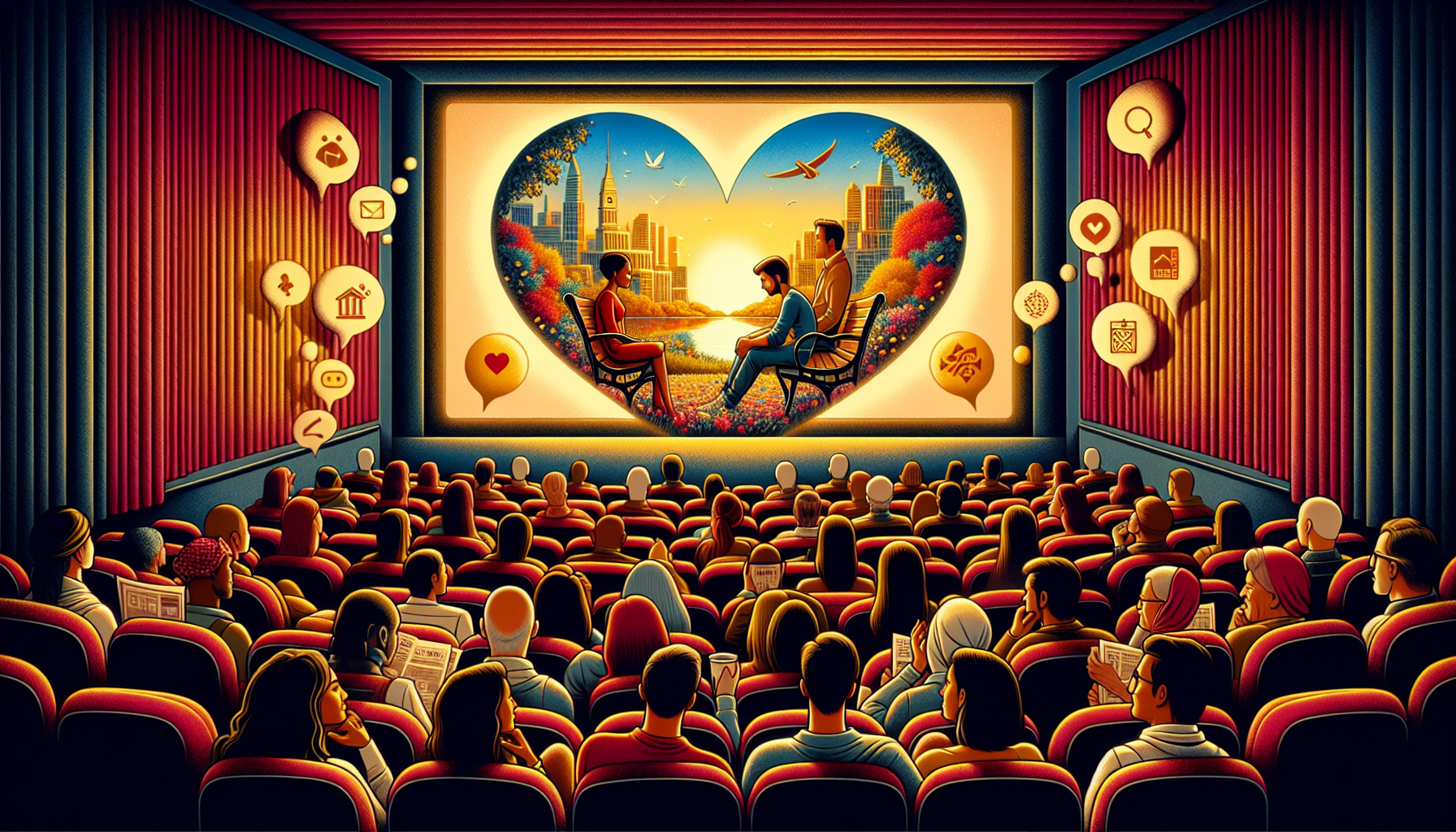
When Cupid Wears a Megaphone: Integrating Social Commentary in Romance Films
Imagine a world where every cheesy line in a romantic movie serves a double purpose—sparking both butterflies and cerebral buzz. Yes, we’re talking about the delectable blend of love and social commentary, mixed together like a fine cocktail of emotions and intellect. It’s less about finding the perfect love potion, and more about stirring thought-provoking ideas into those heart-thumping scenes.
The Recipe for Romance and Reflection
To delve into how filmmakers masterfully integrate social issues into films with a romantic allure, let’s strap on our movie critique glasses (they’re like regular glasses but with an extra flair for cinematic drama). The art lies in the delicate balance of not overshadowing the love story with heavy-handed preaching or reducing the social issues to mere background noise. It’s about making the audience swoon and think, often in the same scene.
1. Choose Your Ingredients Wisely
The baseline ingredient for any rom-com or romance drama is relatability. When directors choose a theme or issue, relevance is key. It has to resonate on a personal level with the audience, or it risks falling flat. Think economic disparity in Pretty Woman or racial prejudices in Guess Who. These films use personal and intimate stories to discuss broader societal issues, making the audience nibble on the social commentary while rooting for the protagonists’ love triumphs.
2. Stir Gently, Don’t Shake
There’s a subtle art in mixing social commentary without turning the film into a courtroom drama (unless it’s a courtroom romance, of course). For instance, in The Big Sick, cross-cultural challenges are as much a part of the narrative as the central romantic storyline. The viewer gets a taste of cultural clashes and immigrant family dynamics smoothly blended into the plot, enriching the romance without overwhelming it.
3. Let It Simmer
Integration of commentary should feel organic, not forced. In La La Land, struggles with artistic integrity and personal compromise simmer alongside the love story. This approach allows the audience to absorb the social undertones while being dazzled by Ryan Gosling’s dance moves and Emma Stone’s witty retorts.
The Proof Is in the Pudding: Case Studies
Some films decorate it right, making the blend of romance and commentary feel as seamless as peanut butter and jelly (if you’re into that sort of thing). Brokeback Mountain, a film both disturbing and deeply moving, serves as a poignant exploration of forbidden love amidst societal homophobia. It exposes the harsh realities of being gay in a conservative American setting, all while maintaining a deeply personal, emotional pull.
Then there’s the visually sumptuous Moonlight, where the tender exploration of a young man’s grappling with his identity and sexuality provides a backdrop to his emotional connections throughout his life. It’s not just a coming-of-age story or a romance, but a stunning societal commentary on black masculinity and vulnerability.
The Artistic Aftertaste
As the credits roll and the popcorn bucket is sadly empty, films that master this blend leave something behind: a lingering thought, a nudge to the worldview, perhaps even a spark of advocacy. This blend of sensation and thought, of feeling and reflection, can transform a simple night out at the movies into an enriching experience that resonates on multiple levels.
So, when next you dab your eyes or your heart skips a beat while the on-screen couple finally figures it out, pay attention. There might just be a slice of societal insight wrapped up in that sweet cinematic kiss. And just like that, the movie isn’t just a movie anymore—it’s a conversation starter, wrapped up in a bow of heartfelt moments and critical perspectives. Who said romance can’t be both delightful and deep?






